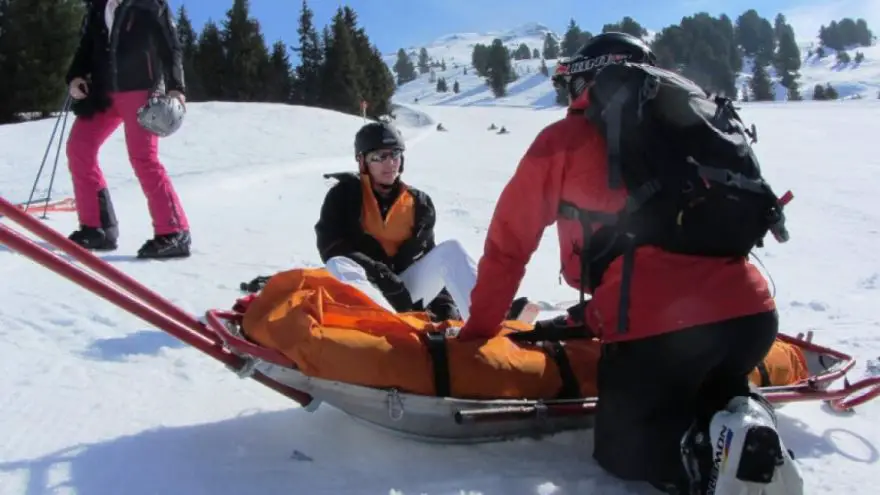What to Do During Backcountry Medical Emergencies
 What to Do During Backcountry Medical Emergencies
gearweare.net
What to Do During Backcountry Medical Emergencies
gearweare.net
Recreational activities that take place in the backcountry carry inherent danger. Someone slips and falls, the weather changes suddenly, or you take a wrong turn and the situation can turn from pleasant to precarious in a few short minutes. Complicating matters in the fact that every backcountry emergency presents its own unique set of challenges that need to be evaluated individually.
Dealing with medical emergencies in the backcountry is especially scary since improper action can cause the situation to worsen rapidly. Cleaning a wound to prevent infection or resting a twisted ankle for the appropriate amount of time aren’t just good practice, but are crucial actions dictate whether everyone makes it home happy and healthy.
For most backcountry injuries, medical assistance is over two-hours distance away. Properly handling severe injuries this far away from the lifesaving infrastructure of human society requires everyone to keep a cool head while assessing every detail of the situation. Ensuring that the injured receives all the care they need and is not asked to overexert themselves is the most important thing to do. After that, things like shelter and the need for evacuation are gaged, and a plan of action should be made.
The following pointers will help you be ready if injury does occur, and will guide you through the process of mitigating greater problems and getting the injured home safely.
Table of Contents
Bring a First Aid Kit
Whether you’re on a day hike or a weeklong rafting trip, a complete first aid kit is an essential item that should always be in your bag. Keeping a small one on you and a larger one in the car is a good practice that ensures you won’t run out of any of these critical items. All first aid kits should include bandages and sterilization supplies for treating cuts, moleskin for blisters, ACE bandages and splints for dealing with strains and broken bones, over-the-counter medications for treating an assortment of common ailments, and useful tools such as tweezers, a thermometer, blunt tip scissors, and water purification tablets. Other important items you may want to include are bug spray and sunscreen, prescription medications, safety pins, and a space blanket.
Avoid Injuries Through Preparation and Good Practice
In the backcountry, as in all aspects of life, we take steps to ensure that the possibility of injury is mitigated before it occurs. Just as you shouldn’t merge onto a new lane on the highway without checking your blind spot, going into the backcountry without the proper knowledge of the environment and your gear is never a good idea. Make sure to always:
- Check the weather right before setting out – The weather can be quite variable in the backcountry, so it is important to get the most up-to-date forecast possible. Also, make sure you understand the larger weather patterns in the area through which you will be traveling. For example, where I live in Colorado, thunderstorms occur almost daily during the afternoon in summer, so hikes are planned early in the day. If you do get caught in a thunderstorm, follow these guidelines to minimize the likelihood of getting hit by a strike.
- Study the rout that you plan to take – Know how many miles you will be traveling and where you will be camping each day you’re in the backcountry. Note other trails that bisect your path and make plans for evacuating at multiple points along the trail.
- Stay on the path – Injuries are more likely to happen when you venture away from the path. In the winter the possibilities of avalanches increase, and the loose rock found off the path when there is no snow is easier to slip on then the compacted dirt of most trails.
- Know how to use your gear – Set your tent up, practice using your stove, and learn how to read a compass and a map at home, before heading into the wilderness.
Evaluate the Injury
Once an injury has occurred, it should be evaluated immediately. Ask questions like:
- Can the injury be dealt with straightaway, without professional medical attention?
- Are there any wounds that need to be dealt with? How severe are they (i.e. stitches vs. a band aid)?
- Is the hurt person able to walk?
- If they can’t walk, will they be able to after some rest?
- Do they need to be evacuated?
Answering these questions will help you determine whether the injury is useable or unusable. An unusable injury means that the hurt person will have to be evacuated.
As the injury is evaluated it should also be cleaned and dressed to stop infection or greater harm. Cuts should be removed of debris and disinfected, blisters should be covered, fractures should be splinted, and sprained joints should be rested, iced, compressed, and elevated. The person with the most experience with medical emergencies should take charge of this process. Anyone who plans to spend a lot of time in the backcountry should also get training in CPR and wilderness medicine.
Make a Game Plan
After the injury has been evaluated and cared for as best as possible, you will have to figure out what to do next. If the problem is small, it is possible that you will be able to proceed with your wilderness adventure immediately. Some injuries will require rest before the hurt person can keep moving though. If they need to rest, finding shelter or setting up a tent is a good idea. After they have rested, reevaluated the injury. In some cases, you will be able to continue the trip, while other situations may necessitate an evacuation.
In the case of an evacuation, if the injured individual can walk, distribute their bags amongst the group and begin the trek out immediately. Monitor the hurt person’s progress, checking in on the injury and assisting them whenever it is needed.
Catastrophic injuries, that leave the injured immobilized, will require a rescue operation. In this case, one of two things can happen. An ambulance can be sent to the trail head, and then an EMS crew is sent to the hurt person where they are on the trail. If you are deep in the backcountry, or high on a mountain, a Search and Rescue (SAR) helicopter can be sent to your location. The protocols for when the state covers these bills vary, so make sure to read up on the SAR policies where you will be traveling.











